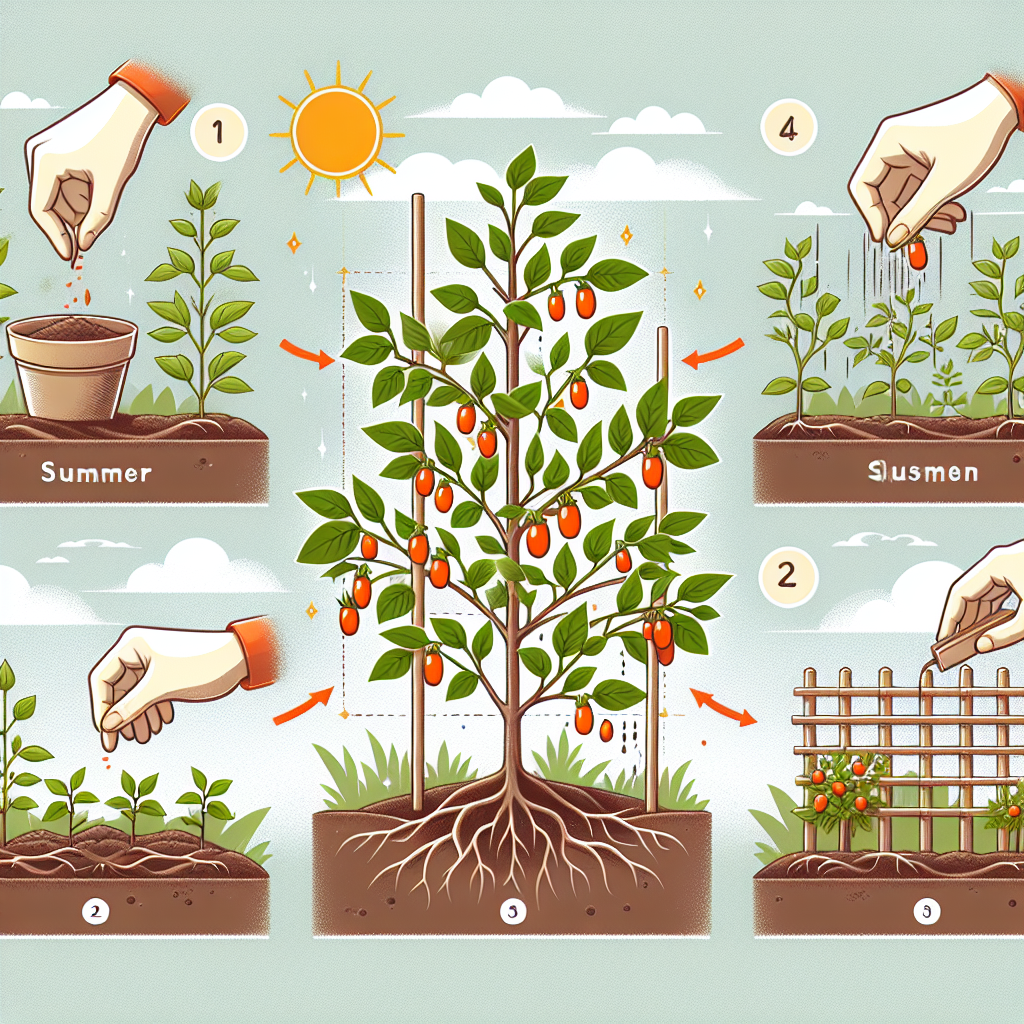
How to grow goji berries
Introduction to Goji Berries
Goji berries, also known as wolfberries, have gained enormous popularity in the wellness community. Revered for their numerous health benefits, including high antioxidant content and potential anti-aging properties, these small red fruits are not only nutritious but also relatively easy to grow. If you are curious about how to cultivate your own goji berries, this guide will provide you with everything you need to know.
Understanding Goji Berries
Originating from the Himalayas, goji berries have been used in traditional Chinese medicine for centuries. They are packed with vitamins C and A, iron, and several essential amino acids. Many people consume them dried or in juices. Their supposed health benefits have led to a rise in interest in cultivating goji berries at home. This small shrub can thrive in various growing conditions, which makes it an excellent choice for both novice and experienced gardeners.
Benefits of Growing Goji Berries
There are several reasons why you would want to consider growing **goji berries**:
- Health Benefits: These berries are rich in antioxidants and nutrients.
- Low Maintenance: Goji berry plants are relatively easy to care for.
- Versatile Use: They can be used in various culinary dishes or consumed dried.
- Attractive Plant: Their flowers add beauty to any garden.
Choosing the Right Location
To grow goji berries successfully, it is essential to select the right location in your garden or yard. Here are some vital factors to consider:
- Sunlight: Goji berry plants thrive in full sun, requiring at least 6 hours of sunlight per day.
- Soil Type: Well-draining soil with a pH of 6.5 to 8.0 is ideal. Sandy or loamy soils are preferred.
- Space: Make sure to provide adequate space for the plants to grow, as they can spread quite wide.
Preparing Your Soil
Before planting your goji berries, it is essential to prepare the soil adequately. Steps to follow include:
- Clear the area of any weeds, rocks, or debris.
- Test the pH level of your soil to ensure it falls within the optimum range.
- Amend the soil by adding organic matter like compost or well-rotted manure.
- Ensure good drainage by mixing in sand if your soil is heavy or clay-like.
How to Grow Goji Berries
Growing goji berries is a straightforward process. Here’s a step-by-step guide:
Choosing the Right Variety
There are two primary types of goji berry plants: the Chinese goji (Lycium barbarum) and the Common goji (Lycium chinense). The Chinese variety is more popular for its nutritional value. Consider choosing a variety that is well-suited to your climate for the best results.
Planting Goji Berries
Once you've prepared your soil and chosen your variety, you can proceed with planting:
- Timing: The best time to plant goji berries is in the spring, after the last frost.
- Spacing: Space the plants about 3 to 4 feet apart if planning to grow multiple bushes.
- Depth: Plant the goji berry seeds or seedlings about 1 to 2 inches deep.
Watering and Fertilization
Proper watering and fertilization are integral to the healthy growth of goji berries:
- Watering: Keep the soil consistently moist but avoid waterlogging. Water deeply once or twice a week, depending on rainfall.
- Fertilization: Use a balanced fertilizer in early spring to encourage growth. Avoid over-fertilizing, as it can lead to excessive foliage at the expense of fruit.
Maintenance and Care
Ongoing care will ensure that your goji berry plants thrive:
Pruning Goji Berry Plants
Regular pruning is essential to maintain the health of your goji berry plants. Here’s how to do it:
- Thin out overcrowded branches to allow for better airflow.
- Remove any dead or diseased stems to promote new growth.
- Prune in late winter or early spring before new growth begins.
Pest and Disease Management
While goji berries are relatively pest-resistant, you should still be vigilant:
- Common Pests: Watch out for aphids and spider mites. Neem oil is an effective remedy.
- Diseases: Root rot can happen in poorly-drained soil. Make sure drainage is adequate.
Harvesting Goji Berries
Your patience will pay off when it's time to harvest. Here’s how to determine when your goji berries are ready:
- Berries will turn a bright, vibrant red when they are ripe.
- Harvest the berries in late summer or early fall, when they are at their most flavorful.
- Use scissors to prevent damaging the plant when you pick the berries.
Common Challenges When Growing Goji Berries
Like any plant, growing goji berries can come with its unique set of challenges:
- Climate Sensitivity: While they can adapt to various climates, extreme frost can damage the plants.
- Overwatering: Ensure you’ve got a proper watering schedule to avoid root rot.
- Pest Intrusion: Regularly inspect for pests; early detection can save your crop.
Conclusion
Growing goji berries at home is a rewarding project that enables you to enjoy the many health benefits of these nutrient-rich fruits. By following the steps outlined above and giving your plants the attention they deserve, you can successfully cultivate your own goji berries. Whether you choose to eat them fresh, dry them for later, or incorporate them into recipes, these berries will add value to both your garden and your health.
"The best time to plant a tree was 20 years ago. The second best time is now." – Chinese Proverb
So, why wait? Begin your goji berry gardening adventure today!
By Guest, Published on September 23rd, 2024